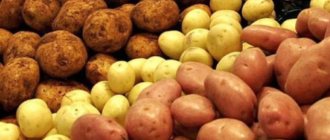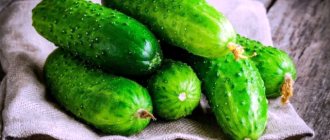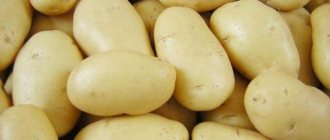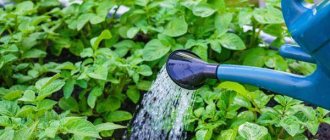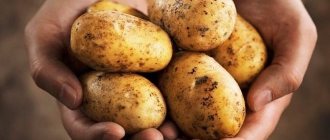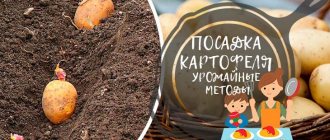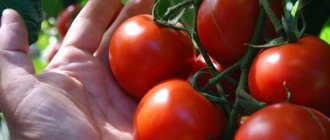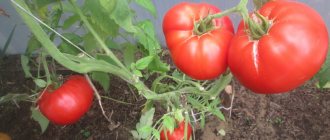Breeding history
The “Udacha” potato variety was developed in the 90s of the last century. The basis of the variety was the potatoes “Vilnya” and “Anoka”. Breeders set a goal - to achieve the creation of an unpretentious potato variety that produces good yields in different climatic zones with different soils. As practice has shown, the agronomists coped with their task excellently.
Newly baked potatoes “Udacha” have proven themselves well in a variety of regions: from the North-Western regions of Russia to the Black Earth Region, from the Volga region to the Far East. Its main feature is its high adaptability. The yield per hectare is 40-45 tons, even in hot and dry summer conditions.
How to properly harvest and preserve the harvest?
To ensure that the harvest does not disappear prematurely, it must be properly harvested and stored:
- Before harvesting the tubers - 1.5-2 weeks before, the tops are cut off.
- Harvesting takes place in mid to late August, depending on planting time and climate zone. The signal for harvesting is when the bushes dry completely.
- The dug up potatoes cannot be immediately placed in the basement. First it is dried in the sun, then in the shade. Dried tubers are sorted - put aside for seeds, for food or sale, damaged potatoes are removed.
Rejected potatoes from the entire harvest are 3%, no more. Damaged tubers are stored separately from quality potatoes, and they are used for food first. Potatoes “Lucky” are stored well if the appropriate conditions are created; the optimal temperature in storage is 2-4 degrees Celsius.
Representatives of the gardening company talk about the best varieties of potatoes of domestic and Dutch selection. You can compare Dutch potatoes “Gala” with the domestic variety “Udacha”:
Description and characteristics
The plant is characterized by powerful 40-centimeter bushes with thick leaves. Leaf shape with a characteristic dissection, bright green color. The variety blooms briefly, but profusely. The inflorescences are collected in small clusters. The flowers are snow-white, with sepals bent downwards.
Potato tubers are round and oval in shape, with a small number of eyes. The color of the tubers varies from yellowish-cream to brownish. Tubers of this variety are characterized by thin and smooth skin, so there is very little peeling when preparing dishes. When raw, the potato flesh is white, but turns slightly yellow when cooked. This is especially noticeable if mineral fertilizers were used when growing the plant: potassium and chloride.
The characteristics of the “Luck” potato are as follows:
- The duration of the growing season is from 80 to 90 days;
- The average weight of 1 tuber is 150 g;
- The number of tubers on one plant is 10-15;
- The percentage of starch is 12-14%;
- Productivity per 1 ha (on average) – 42 tons;
- Productivity from 1 bush - 1.7 kg;
- The percentage of marketable products is 88-97;
- The taste is excellent.
The yield of Udacha potatoes is influenced by weather and agricultural practices, but the type of soil does not have a special impact on the yield.
Reviews from farmers and ordinary gardeners
Everyone who knows a lot about potatoes and has experience in growing the “Udacha” variety is sure that this is one of the best results of domestic selection. Gardeners are attracted by the yield, unpretentiousness and taste of the tubers; farmers, in addition, are satisfied with the presentation of the potatoes they grow, their keeping quality and their ability to withstand transportation well.
★★★★★
Leonid Borisovich, 66 years old, Irkutsk region. We have been planting “Lucky” for the third year.
So far these are the best potatoes in my gardening practice. The variety has large and beautiful tubers that last well until spring, although the potatoes ripen early. Gives an excellent harvest even on peat-sandy soil. My wife also likes that the tubers are very tasty and thin-skinned - there is little waste when cleaning. ★★★★★
Elena Romanovna, 54 years old, Novosibirsk region. This potato has extremely beautiful and tasty tubers.
You can fry them or bake them in the oven, they don’t lose their shape, and they don’t get soft when cooked. And most importantly, “Udacha” ripens early - when other varieties are just setting tubers, I’m already digging up the bushes. ★★★★★
Denis Ivanov, farmer, Belgorod region. What I can say about “Udacha” is that it is an unpretentious and productive variety that stores well.
One of the disadvantages is that it can get sick if it is not treated for late blight in time. He doesn’t like thickening, so I leave 80 cm between rows instead of 60. Hide
Add your review
The “Luck” variety is chosen by gardeners and summer residents who do not have time for long fuss with garden work, and by farmers counting on an early and abundant harvest. The variety successfully combines good agrotechnical characteristics with the excellent taste of the tubers. If you want to experience the real taste of potatoes, try Luck.
0
0
Copy link
Advantages
The advantages of the variety that distinguish it from other selection products are the following:
- Immunity to low temperatures. For active germination of tubers, an air temperature of plus 10 degrees is sufficient. Potato sprouts develop well in both cloudy and moderately cool weather. The landing date for the central regions is the end of April. Closer to the north, potatoes are planted in mid-May.
- Quick tuber setting. Approximately 1.5 months after emergence, young potatoes are quite suitable for food. The mass of tubers varies from 60 to 80 g. Young potatoes have a pleasant and delicate taste. The yield per 1 hectare after 2 months of growing season ranges from 20 to 25 tons.
- Resistance to diseases (potato cancer, rhizoctonia, mosaic, scab). Viral diseases are very rare.
- Excellent keeping quality. When ripened early, potato tubers are perfectly preserved “from harvest to harvest.” It is only important to ensure normal storage conditions. At the same time, potatoes do not lose their taste.
- Resistance to mechanical stress. The variety is very well suited for mechanical harvesting and transportation. This is especially important if potatoes are grown commercially.
- Excellent taste characteristics. The tubers are not watery and are equally suitable for mashed potatoes, baking and frying. This variety is rightfully considered one of the most delicious.
Harvesting
Harvesting potatoes Luck is no less important than planting and growing. Especially if the tubers are intended to be stored. It is preferable to harvest potatoes in dry and warm weather. It is advisable that there is no rain for 5-7 days before harvesting.
When to dig up potatoes? Luck
You can dig up tubers for sale or consumption 45 days after germination. However, only root crops at the stage of biological maturity will be stored well, and the ripening time for Udacha potatoes is 80-90 days. This means that they will begin harvesting it in the second half of August.
Attention!
There is no need to fear for the harvest if the tops dry out a little earlier than this time. The roots will continue to grow in the soil for some time. Their skin will have time to harden.
Storage rules
Before storing the Udacha potatoes, they are dried and sorted. It is important to select healthy tubers without mechanical damage. Store root vegetables in a dark, cool room with good ventilation. A cellar or basement is ideal for these purposes.
How to grow "Luck"
The main thing that distinguishes the “Udacha” potato from other hybrids and varieties is its unpretentiousness in terms of soil. It grows not only on chernozems, but also on clay soils, loams and sandy loam soils. But potatoes also require some care. For example, the beds need to be prepared in the fall. Potatoes grow best after melons, cabbage and cucumbers. If you plant tubers in the same place for a long time, the risk of disease increases. In addition, the variety is degenerating.
Tubers grow best in soft soil. Therefore, the area intended for planting the variety must be dug up in advance to a depth of 2 cm. At the same time, the soil is fertilized with compost or humus, based on 40 to 45 buckets per 1 hundred square meters.
For clay soils, it is most convenient to plant tubers in pre-formed ridges 15-20 cm high, with a distance between ridges of 70 cm. With such planting, the soil will warm up better. Its breathability will also increase. For chernozems, planting in “ridges” is not necessary, since the soil warms up quite well without it.
How to plant potatoes for an early harvest?
Farmers have a way of getting early harvests. Features of the method:
- Seed tubers are placed in boxes with sawdust.
- The potatoes are watered every day.
- After 2 weeks, fully formed bushes are obtained - they can be planted in open ground.
In pursuit of early harvests, it is important not to overlook frosts. If there is a threat from them, it is better to play it safe - cover the planting with film.
The girl gardener planted the “Lucky” variety for the first time - for the sake of an early harvest. The video shows the first digging of potatoes.
Landing
The optimal weight of a planting tuber of the “Udacha” variety is from 50 to 80 g. The variety is characterized by large potatoes, so each tuber is cut so that three or four eyes remain on each part.
Important! Cut the tubers of the “Udacha” variety immediately before planting. After each tuber, the knife must be disinfected in a strong solution of potassium permanganate.
For planting, you need to take only healthy potatoes. Tubers with visible signs of disease should be discarded, as there is a risk of getting infected plants.
It is recommended to treat the tubers with wood ash. The ash disinfects and plays the role of potassium fertilizer for planting material. Then the potatoes need to be placed in a single layer in a sprouting box. The optimal temperature for germination is 16-18 degrees.
The optimal time for planting the “Udacha” variety, depending on the region, is from the second half of April to mid-May. The distance between holes within a row is at least 20 cm. The interval between rows is from 30 to 40 cm. To feed the plant, you need to mix compost and wood ash in equal proportions. No more feeding is needed; it is better to feed the bushes during the first hilling.
After emergence, it is advisable to hill them up to protect them from possible night frosts. Further care of the plants consists of weeding and loosening the soil. This allows for improved air supply to the root system. It is best to loosen the soil after rain, before it has had time to dry out.
Potatoes "Luck" love nitrogen fertilizers, but they need to be fed with great care so that they do not get on the leaves and stems of the plant. In terms of watering, the variety is undemanding, so abundant watering is needed only in severe drought and hot weather.
Cultivation care
Even with positive combinations of all circumstances, such as good planting material, nutritious soil, sufficient lighting and a temperate climate, the potato harvest will not have an effect without care on the part of the gardener. Crop care consists of the following work:
- hilling;
- loosening;
- watering;
- feeding;
- weed removal;
- control of diseases and pests.
Hilling
When the bushes reach a height of 12 cm, they need to be hilled up and immediately watered. The hilling process increases the volume of soil in which new tubers develop. Since they are placed shallowly (15 cm), then, willy-nilly, the root crops have the potential to expand their boundaries. Thus, the potatoes are freely placed underground and increase in size.
Too dry, burnt soil is not suitable for hilling. This will only harm the plants, scorch the stems or even kill them. If you did not have time to earth up the seedlings in time, then simply loosen the beds and water them.
When hilling, the number of stems, leaves and roots increases, the plant strengthens. Hilling is repeated three times. The first time you need to sprinkle the plant so that the top of 3-4 centimeters remains on the surface. The last time they hill up is when the tops become thick and close over the rows. There is also an unconventional method of hilling - the so-called fan method, using green manure.
Fan hilling of potatoes with green manure will protect the soil from drying out and weeds at the same time.
Watering
To grow 1 kilogram of potatoes, the plant must pass through up to 100 liters of water in the form of natural and artificial watering. Since our Udacha crop is drought-resistant, imagine how lucky the gardeners are. But that doesn't mean she doesn't need water. Yes, potatoes will not die from the heat. But in order for the stems to develop and the roots to grow, you need to carry out 3-4 waterings over the summer, delivering 10-12 liters of water to each bush at a time.
Potatoes are irrigated for the first time 5–6 days after planting. In the future, this should be done strictly in the evenings. You can’t water potatoes either in the morning, or especially during the day, because under the hot rays of the sun the tubers in the ground will simply cook. If the bushes are hilled, then it is advisable to water them with a hose.
Hilled potatoes can be watered with a hose
And if not yet, then you need to pour water from a watering can under each bush.
It is better to water unearthed potatoes from a watering can
To obtain a bountiful harvest, potatoes must be provided with fertilizing. It is provided to plants in the form of watering.
Potato feeding - table
| Agricultural event | Process |
| 1st feeding | Choose one thing for watering:
|
| 2nd feeding | When flower buds appear, feed each bush with 0.5 liters of aqueous solution. Use one of two recipes:
|
| 3rd feeding | When the flowers bloom, water each bush with 0.5 liters of solution prepared according to the recipe: for 10 liters of water, 1 cup mullein and 2 tbsp. spoons of superphosphate. |
Weed removal
Removing weeds is one of the constant concerns of gardeners. The grass shades the tops, making them weak. Digging deeper into the soil with rhizomes, it does not allow root crops to develop to their full potential. Weeds must be pulled out by hand or with a hoe, cutting off the roots, and weeded out. At the same time, an additional effect is obtained - loosening the soil.
Use the wonderful moment after the rain to remove weeds by hand. Their roots are extracted very easily from moist (but not wet) soil.
You will have to remove weeds manually until the tops close over the rows. Then it will no longer be weeds, but potatoes that will begin to dominate the beds and “clog” the weeds with green mass. From now on you can forget about weeds.
An excellent way to control weeds is mulching. Many gardeners have a variety of waste on their farm that can serve this purpose. What was once trash can become mulch material. At the same time, the issue of its disposal is being resolved. Anything is suitable - dry leaves, sawdust, straw, grass, etc.
Pest and disease control
The variety has good disease resistance, but you should be wary of certain diseases.
Late blight
It appears as dark gray spots on the leaves and stems. The disease affects the entire plant down to the tubers. They begin to rot.
Prevention against late blight can include:
- Maintaining crop rotation.
- Weeding and weed removal.
Before the flowers appear, the seedlings are treated with Ridomil (25 g per 10-liter bucket of water). After the flowers appear, use the Hom product (30 g per 10-liter bucket). If affected plants are found, they must be immediately dug up and destroyed.
Stem nematode
A plant affected by a nematode is characterized by increased bushiness. The leaves are paler in color than is typical for the variety. Spots appear on the tubers. Prevention: adding wood ash when planting. If affected plants are found, they need to be dug up and destroyed.
Colorado beetle
On plants affected by the beetle, tubers form worse than on healthy ones. Planting plants with a strong smell (calendula, dill) next to the potatoes helps. Treatment with such means as Karate, Corado, Tanrek, etc. helps. Before using the drugs, you must carefully study the instructions. And, of course, the tried and tested collection of beetles by hand helps. Good protection against beetles is adding wood ash to the holes when planting.
Description of the variety Udacha
Potatoes are grown in regions of different climates - both in hot, dry summers and in cool, rainy ones, they produce a stable harvest. The variety is early, ripens in 45-60 days.
Adapted to any soil, resistant to weather changes and major crop diseases:
- resistant to potato cancer pathogen;
- moderately susceptible to the causative agent of late blight on tubers, wrinkled mosaic, black leg, wet rot, common scab;
- moderately resistant to the causative agent of late blight on tops;
- not resistant to golden potato nematode (hardy varieties have now been bred - Latona, Asterix and others).
Tubers ripened in summer are stored in the cellar until next spring; mechanical damage quickly heals.
Potato Luck is a semi-spreading plant, 60-70 cm high, with dark green matte leaves and white flowers.
Main indicators of the Udacha variety - table
| Index | Content | Note |
| Appearance | The plant is semi-spreading, 60–70 cm high, fluffy, with dark green matte leaves and white flowers. | Due to its compactness, 70 cm is sufficient for row spacing and 20–25 cm between bushes. |
| Ripening period | Early | After 45–50 days you can dig it up for food, after 70 for winter storage. |
| Tuber | Light beige with small eyes, white flesh, dense. | It may darken when potassium chloride is added to the soil. |
| Weight | 120–250 g | These are large tubers. |
| Starch content | 12–15% | This is the average for potatoes. |
| Taste qualities | Table grade, good taste. | — |
| Plastic | High | An unpretentious variety, resistant to temporary drought, cold snap, long rains, and deviations in agricultural technology. |
| Productivity | 300–500 c/ha | This yield is declared for industrial production; in small plots it can be even higher due to the use of improved agricultural technology. |
| Marketability | High | — |
| Keeping quality | good | 95% |
Reviews about the variety
Vadim, Nizhny Novgorod
I grow several varieties of potatoes on my plot, one of them is Luck. I started planting with a few kilograms of these potatoes. I planted with my eyes and unexpectedly got a good harvest. It was enough to plant next year and eat. I can’t say that I took intensive care, no more than other varieties, and the harvest was no worse. For me it was luck.
Irina, Vladivostok
This is my 2nd year growing this variety. I like the taste the most. When boiled, it is not hard and at the same time does not fall apart. If we plant in mid-May, you can start eating new potatoes at the end of June. And we harvest in early August. Almost all summer with fresh potatoes.
Maxim, Sverdlovsk region
I was unlucky enough to plant the Luck potato variety in a dry year. The potatoes turned out small. But the next year, even from the little things, I got a good harvest. Now the plot for potatoes has been increased in order to sell. The tubers are beautiful, crumbly when cooked, and customers like them. Even regular customers have appeared; they trust the local manufacturer.
Unconventional ways to grow potatoes Luck
The goal of new experimental methods of growing potatoes is to get more yield at less cost. In bags and boxes, in buckets and baskets, on undug soil and under straw, tubers grow - and no worse than with traditional planting. What do these methods have in common:
- Potatoes develop a more developed root system;
- higher productivity;
- saving space;
- reduction of labor costs.
Non-standard methods of growing potatoes - photo gallery
The tubers can be covered with black film, then there is no need to hill them
You can plant potatoes in plastic bags if there is not enough space on the plot
For planting, you can use available materials - old buckets, cans and barrels
Bushes planted in boxes will give a full potato harvest
